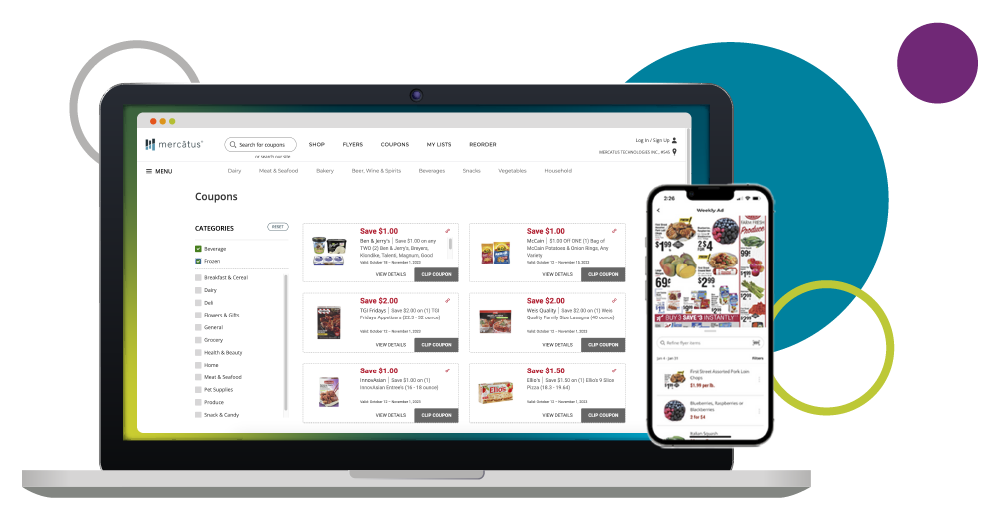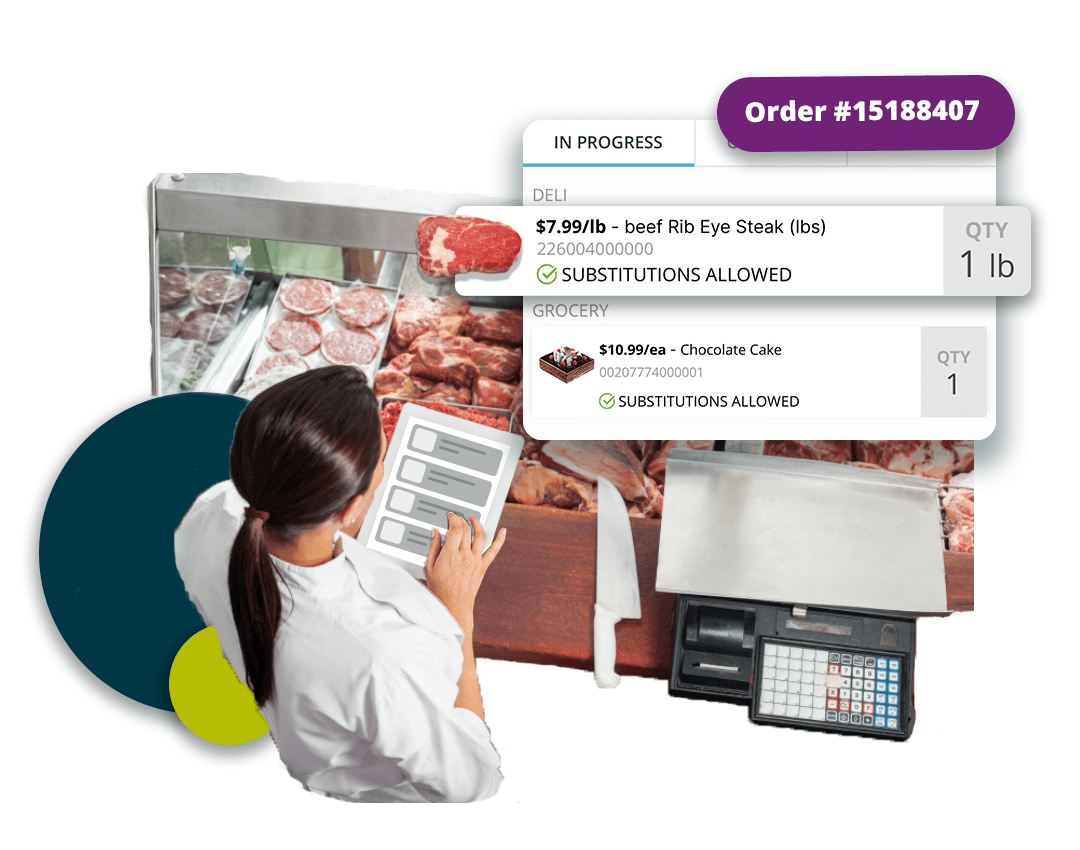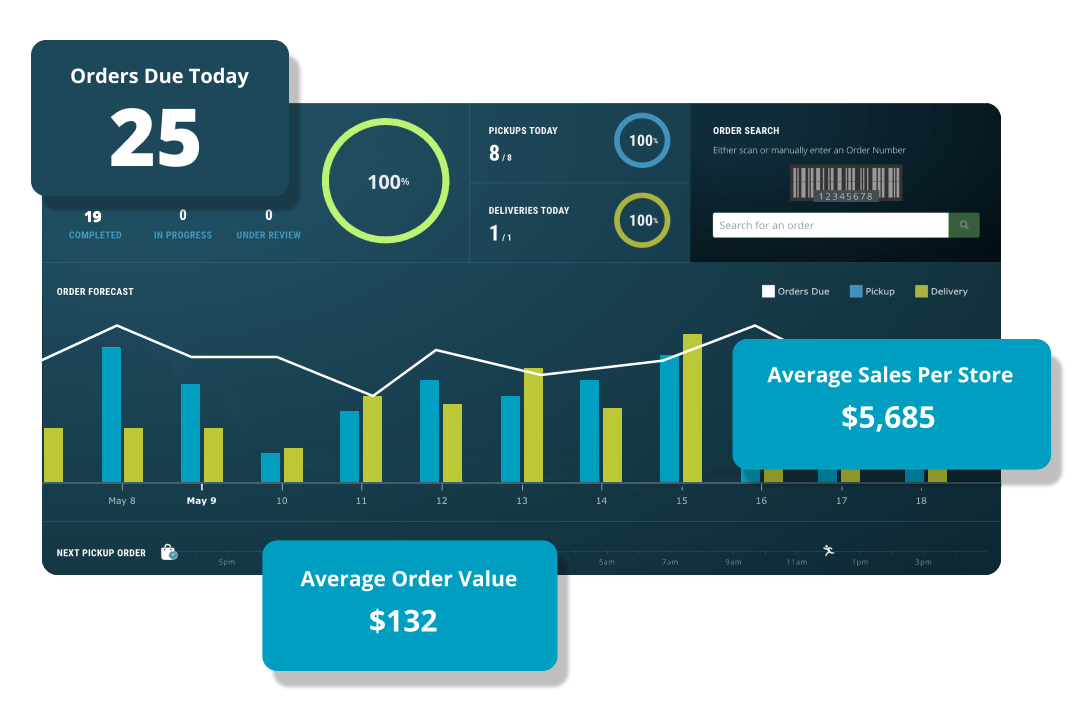Exploring Grocery Loyalty Programs: Key To Smarter, Rewarding Shopping
- - Category: Business Opportunities
- - 24 Apr, 2024
- - Views: 34
- Save
Grocery loyalty programs enhance customer engagement and satisfaction through personalized, tech-driven rewards.
Introduction
In today's retail industry, grocery loyalty programs have become integral to building and sustaining meaningful relationships with customers. These innovative programs go beyond mere transactional benefits to offer personalized experiences that significantly enhance customer satisfaction and loyalty. As consumers become increasingly discerning in their shopping habits, the demand for more value-driven and customized shopping experiences has surged. Enhanced grocery loyalty programs not only incentivize customers to return but also equip retailers with valuable insights, enabling them to refine their offerings and strategies in alignment with customer expectations.
Modern grocery loyalty programs have evolved to integrate technology through loyalty app features and omnichannel benefits. This digital shift not only caters to the convenience and preferences of modern consumers but also opens new avenues for grocery stores to engage with their customers through personalized discounts and targeted marketing campaigns based on customer data analytics. As we explore the nuances of grocery loyalty programs, it becomes evident that their role extends far beyond mere customer rewards, serving as a foundational component of a successful and responsive customer engagement strategy in the digital era.

Understanding Grocery Loyalty Programs
Grocery loyalty programs are structured marketing strategies designed by grocery stores to encourage ongoing business from customers. These programs offer rewards, discounts, and other special benefits to members, making shopping more rewarding. They aim to understand and meet the needs of their customers better.
What are grocery loyalty programs?
Grocery loyalty programs are initiatives by grocery stores to reward customers for their repeat business. Customers sign up for these programs and earn points, discounts, or other perks for their purchases. The focus is on rewarding loyalty and encouraging customers to keep coming back.
The Role of Grocery Loyalty Programs
Grocery loyalty programs play a crucial role in customer loyalty and retention. They provide:
- Rewards for Repeat Purchases: Customers earn points or discounts that incentivize future shopping trips.
- Personalized Shopping Experiences: By analyzing shopping patterns, stores can offer personalized discounts and recommendations.
- Enhanced Customer Engagement: These programs keep the store in constant communication with the customer, improving the overall shopping experience.
Grocery loyalty programs are essential in today's competitive market to helping stores stand out by offering unique value to customers.
Key Components of Successful Grocery Loyalty Programs
Customer loyalty programs help build lasting relationships with customers, crucial for retention and satisfaction.
Customer Loyalty Programs
To create a lasting relationship with customers, loyalty programs offer them reasons beyond price to continue shopping. This results in:
- Customer Retention: By rewarding repeat business, customer loyalty programs foster a strong bond between the brand and its customers, crucial for retention.
- Brand Advocacy: Encourages customers to become brand advocates, sharing their positive experiences with others.
- Enhanced Customer Data: Provides valuable data on customer preferences and behaviors.
- Tiered Rewards: Introduces levels of rewards based on customer spending, encouraging higher purchase volumes.
Grocery Loyalty Reward Points
Reward points are a direct way to quantify customer loyalty, offering immediate value back to the customers for their continuous patronage.
- Incentives for Repeat Purchases: Grocery loyalty reward points motivate customers to continue shopping by translating their purchases into tangible rewards.
- Flexible Redemption Options: Allows customers to redeem points for discounts, products, or special experiences.
- Bonus Points for Special Promotions: Offers additional points during promotional periods to boost sales.
- Seasonal Campaigns: Integrates with seasonal marketing campaigns for relevant rewards offerings.
Membership Benefits
Membership benefits enhance the attractiveness of loyalty programs, providing services and offers that elevate the shopping experience.
- Exclusive Access for Members: Membership benefits offer exclusive deals and services, setting the brand apart in a crowded market.
- Early Access to Sales: Gives members the first look at sales or new product launches.
- Complimentary Services: Offers services like free delivery or exclusive shopping hours for members.
- Birthday and Anniversary Rewards: Celebrate customer milestones with special rewards or discounts.
Exclusive Offers
Exclusive offers ensure that members feel special and valued, fostering a deeper connection with the brand.
- Tailored Deals for Members: Exclusive offers to grocery loyalty program members drive deeper engagement and sales.
- Personalized Discounts: Offers are customized based on the shopping history and preferences of the members.
- Limited-Time Offers: Creates urgency and encourages quicker action from customers.
- Member-Only Events: Hosts special events or workshops exclusively for loyalty program members.
Loyalty App Features
Loyalty apps bring the grocery loyalty program into the digital age, offering a host of features that add convenience and value for the modern shopper.
- Modernizing Customer Experience: Loyalty app features streamline interactions, making it easy for customers to engage with the program.
- Digital Loyalty Cards: Eliminates the need for physical cards, making transactions and point tracking simpler.
- Push Notifications for Deals: Keeps customers informed about the latest deals and rewards available to them.
- Integrated Shopping Experience: Allows for a seamless online and in-store shopping experience, enhancing convenience.
Customer Engagement Programs
Engagement programs keep the conversation going between the brand and the customers, making loyalty programs more than just a transactional relationship.
- Keeping the Brand Top-of-Mind: Customer engagement programs ensure the brand remains relevant and engaging to its audience.
- Social Media Challenges: Encourages customers to engage with the brand on social media for rewards.
- Loyalty Surveys and Feedback: Collects customer opinions for continuous improvement.
- Educational Content: Provides value beyond products, such as recipes or wellness tips, related to the grocery sector.
Grocery Personalized Discounts
Personalized discounts show customers that their preferences are known and valued, significantly enhancing the shopping experience.
- Customized Promotions Based on Data: Grocery personalized discounts use customer data to make promotions more relevant and effective.
- Predictive Personalization: Uses past purchase data to predict future buying habits and tailor offers accordingly.
- Location-Based Offers: Sends special deals when customers are near or in-store.
- Exclusive Product Trials: Offers loyal customers the chance to try new products first.
Customer Data Analytics
Data analytics provide the insights necessary for grocery loyalty programs to remain relevant, effective, and beneficial for both the customers and the brand.
- Guiding Program Evolution with Insights: Customer data analytics ensure loyalty programs evolve with changing customer needs.
- Segmentation for Targeted Marketing: Groups customers for more effective and personalized marketing campaigns.
- ROI Measurement: Tracks the effectiveness of loyalty programs in real-time.
- Predictive Modeling for Inventory Management: Uses customer purchase data to better predict stock needs.
Maximizing the Impact of Grocery Loyalty Programs
As you can see loyalty programs play a pivotal role in attracting and retaining customers. The most successful grocery loyalty programs go beyond basic reward systems; they create a personalized, engaging shopping experience that encourages frequent visits and boosts customer spending. By understanding the key features of top loyalty programs and implementing strategies to maximize customer retention, retailers can transform the routine grocery shopping experience of their customers into a rewarding activity that offers both immediate and long-term benefits.
Top Grocery Loyalty Programs and Their Benefits
The best grocery loyalty programs stand out by offering unmatched value and convenience to their members. These programs often feature:
- Comprehensive Rewards: The top programs offer a wide range of rewards, including cash back, points redeemable for groceries or fuel, and exclusive discounts.
- Personalized Experiences: They utilize customer data to tailor the shopping experience, offering personalized discounts and recommendations.
- Seamless Integration: Leading programs integrate seamlessly with mobile apps and online shopping, providing a hassle-free experience across all platforms.
- Community Building: The most successful programs create a sense of community through events, classes, or online forums, enhancing customer engagement and loyalty.
These elements combine to make certain programs stand out, driving significant customer loyalty and increased spending.

How to Maximize Customer Retention Through Grocery Loyalty Programs
For grocers looking to get the most out of their grocery loyalty programs, consider the following tips:
- Inform Customers About Promotions: Use the program’s app or website to provide notifications on the latest deals and promotions.
- Make Personalized Offers: Provide personalized discounts tailored to shopping habits to attract customers to the items they buy frequently.
- Participate in Special Events: Engage in special events or challenges connected to the loyalty program for customers to earn extra points or exclusive discounts.
- Combine Offers: Whenever possible, combine loyalty rewards with other offers, coupons, or sales to increase order values.
By actively participating in these programs and utilizing the full range of benefits they offer, retailers can significantly enhance the shopping experience of their customers and increase basket sizes
The Transition of Grocery Loyalty Programs
Grocery loyalty programs have recently undergone a significant transformation, reflecting broader changes in consumer behavior and technological advancements. This evolution has reshaped the way grocery stores engage with their customers, offering insights into the future of retail loyalty strategies.
From Cards to Apps: The Journey of Loyalty Programs in the Digital Age
The growth from physical cards to digital apps marks a pivotal shift in grocery loyalty programs. This change has several key aspects:
- Ease of Use: Digital apps eliminate the need for physical cards, simplifying the process for customers.
- Enhanced Engagement: Apps allow for direct communication with customers, offering personalized deals and notifications.
- Data Collection and Analysis: Digital platforms provide valuable insights into customer preferences, enabling more targeted marketing strategies.
This shift reflects a broader trend towards digital integration in consumer experiences, offering convenience and personalization at every touchpoint.
Integrating Technology into Grocery Loyalty Programs
Integrating technology into grocery loyalty programs has been a game-changer, showcasing the potential of digital transformation in retail:
- Personalization at Scale: Advanced algorithms analyze shopping patterns to offer tailored discounts and recommendations.
- Omnichannel Experience: Seamless integration across in-store, online, and mobile app shopping creates a cohesive customer journey.
- Customer Engagement Tools: Features like gamification, social media integration, and interactive content facilitate deeper customer relationships.
The development of grocery loyalty programs, from cards to sophisticated digital platforms, underscores the retail industry's ongoing digital transformation. These advancements not only enrich the shopping experience for customers but also provide grocery retailers with powerful tools to understand and engage their customer base more effectively.
Personalizing the Shopping Experience
Loyalty programs have also become a critical tool for personalizing the grocery shopping experience, transforming routine transactions into meaningful interactions. This personalization is achieved through sophisticated data analysis and omnichannel engagement, ensuring that customers feel uniquely valued at every point of contact.

Personalizing Customer Experiences Through Grocery Loyalty Programs
The role of omnichannel strategies in personalizing customer experiences is pivotal. These strategies involve:
- Unified Shopping Journey: Creating a seamless experience whether the customer shops in-store, online, or via a mobile app.
- Targeted Communications: Sending personalized offers and recommendations directly to customers’ preferred devices.
- Customer Insights: Gathering and analyzing data across all channels to understand customer preferences and behaviors.
Omnichannel strategies ensure that loyalty programs provide a consistent and personalized customer experience, regardless of how or where a customer chooses to shop.
Engagement Strategies and Loyalty Program Analytics
Developing data for personalized experiences is at the heart of modern engagement strategies. This involves:
- Data-Driven Personalization: Utilizing loyalty program analytics to tailor offers and communications to individual customer preferences.
- Behavioral Insights: Analyzing purchase history and engagement data to predict future buying behavior and preferences.
- Continuous Improvement: Regularly updating engagement strategies based on analytics to keep the customer experience fresh and relevant.
By focusing on personalization and leveraging the wealth of data provided by loyalty program analytics, grocery stores can enrich customer engagement and enable a deeper sense of loyalty, making every shopping trip a personalized experience.
Conclusion
Grocery loyalty programs have significantly evolved to become more than just a tool for saving money; they now offer a comprehensive suite of benefits that enhance the entire shopping experience. By rewarding regular customers with personalized offers, exclusive discounts, and convenient shopping features, these programs successfully foster a strong sense of loyalty and satisfaction. The integration of technology has further amplified their effectiveness, allowing for a seamless omnichannel experience that caters to the modern consumer’s need for convenience and personalization. For retailers, grocery loyalty programs represent one of the most effective customer retention tools they have. These programs not only offer immediate financial savings but also provide personalized shopping experiences that can make grocery shopping more enjoyable and efficient.
Frequently Asked Questions
What are grocery loyalty programs?
Grocery loyalty programs are initiatives designed by grocery stores to reward customers for their repeat business. These programs offer various benefits such as discounts, reward points, and exclusive offers to encourage continued patronage.
How do customers sign up for a grocery loyalty program?
Signing up for a grocery loyalty program is typically straightforward. Customers can usually enroll online through the store’s website, via a mobile app, or in-store at the checkout or customer service desk. They’ll need to provide some basic information like a name, email address, and sometimes a phone number.
What are the benefits of joining a grocery loyalty program?
The benefits of joining a grocery loyalty program include access to exclusive discounts, earning points on purchases that can be redeemed for rewards, personalized offers based on your shopping habits, and sometimes even special perks like free delivery. These programs are designed to provide value to frequent shoppers.
How do grocery loyalty programs use data?
Grocery loyalty programs use data to personalize shopping experiences. By analyzing purchase history and preferences, the program can offer tailored discounts and recommend products to customers. This data is also used to improve overall service and product offerings. Data privacy and security measures are typically in place to protect information.

